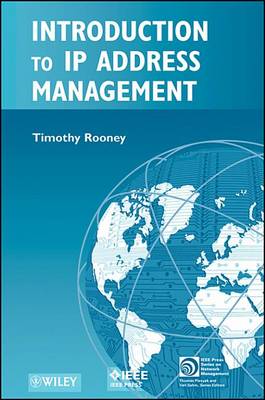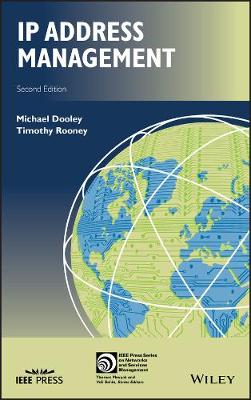IEEE Press Series on Network Management
2 total works
Emphasizing the necessity of a disciplined "network management" approach to IPAM, the subsequent chapters enable you to: * Understand IPAM practices, including managing your IP address inventory and tracking of address transactions (such as allocation and splitting address space, discovering network occupancy, and managing faults and performance) * Weigh the costs and justifications for properly implementing an IPAM strategy * Use various approaches to automating IPAM functions through workflow * Learn about IPv4-IPv6 co-existence technologies and approaches * Assess security issues with DHCP network access control approaches and DNS vulnerabilities and mitigation including DNSSEC * Evaluate the business case for IPAM, which includes derivation of the business case cost basis, identification of savings when using an IP address management system, associated costs, and finally net results Introduction to IP Address Management concludes with a business case example, providing a real-world financial perspective of the costs and benefits of implementing an IP address management solution.
No other book covers all these subjects cohesively from a network management perspective, which makes this volume imperative for manager-level networking professionals who need a broad understanding of both the technical and business aspects of IPAM. In addition, technologists interested in IP networking and address management will find this book valuable. To obtain a free copy of the IPAM Configuration Guide please send an email to: ieeeproposals@wiley.com
Rediscover fundamental and advanced topics in IPAM, DNS, DHCP and other core networking technologies with this updated one-stop reference
The thoroughly revised second edition of IP Address Management is the definitive reference for working with core IP management technologies, like address allocation, assignment, and network navigation via DNS. Accomplished professionals and authors Timothy Rooney and Michael Dooley offer readers coverage of recent IPAM developments in the world of cloud computing, Internet of Things (IoT), and security, as well as a comprehensive treatment of foundational concepts in IPAM.
The new edition addresses the way that IPAM needs and methods have evolved since the publication of the first edition. The book covers the impact of mainstream use of private and public cloud services, the maturation of IPv6 implementations, new DNS security approaches, and the proliferation of IoT devices. The authors have also reorganized the flow of the book, with much of the technical reference material appearing at the end and making for a smoother and simpler reading experience.
The 2nd edition of IP Address Management also covers topics like such as:
- Discussions about the fundamentals of Internet Protocol Address Management (IPAM), including IP addressing, address allocation and assignment, DHCP, and DNS
- An examination of IPAM practices, including core processes and tasks, deployment strategies, IPAM security best-practices, and DNS security approaches
- A treatment of IPAM in the modern context, including how to adapt to cloud computing, the Internet of Things, IPv6, and new trends in IPAM
- A one-stop reference for IPAM topics, including IP addressing, DHCP, DNS, IPv6, and DNS security
Perfect for IP network engineers and managers, network planners, network architects, and security engineers, the second edition of IP Address Management also belongs on the bookshelves of senior undergraduate and graduate students studying in networking, information technology, and computer security-related courses and programs.

